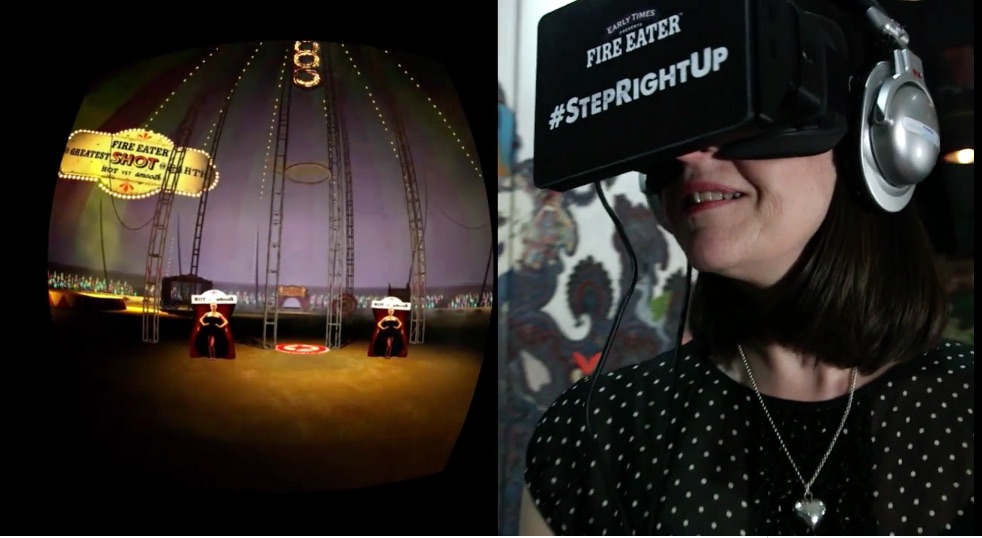The following post is an essay assignment for the fourth module of the inaugural DOCH online research course into contemporary circus.
The module was an investigation into the roles of performative space and approaches to personal disciplines in circus work, and this essay is a response to the question, In What Spaces Does Circus Take Place?
I was surprised that the digital domain did not come up in this lesson, as I was hoping to learn more about circus artists exploring this uniquely 21st Century venue for performed engagement with audiences. So far, however, it seems there aren’t many prominent examples.
Siting a project in digital space goes beyond simply using digital technologies to enhance traditional live performance – Ilona Jäntti’s projection work**, for example, or live feed techniques that I’ve seen in recent Circomedia graduate showcases and in large scale international touring shows. It goes beyond using cyberspace as an archive for recorded versions of live events, such as the examples of ‘extreme circus’, showreels, or promotional trailers.
Some circus projects are now created specifically for film, like scenes in Horacio Alcala’s documentary Grazing The Sky, Cirque Du Soleil’s Worlds Away, or the viral YouTube hit of the Circulus video featuring almost 50 performers in an abandoned London warehouse, shot by Remy Archer. Despite being created with and for digital technologies, however, these finished projects could be said to exist in a televisual terrain, rather than a digital one, due to the way they are received by an audience. Although never intended to be watched as live unfolding events, the experience for the viewer is dictated by the framing choices of the director.
The digital realm is characterised by its responsivity to users – a respect in which it is closer to traditional live entertainment than filmed performance. Theatre has been exploring these territories for well over a decade, utilising networked systems such as phones, intranets and the internet to create participatory modes of engagement. Experimental circus is, however, still playing catch up to the innovations of the theatrical field and, so far, digital possibilities still seem a largely untapped resource.
The immersive promenade production Shelter Me, by Circumference, used some interactivity of mobile phones in a way that allowed the show’s form and content to compliment each other, but the possibilities were not pushed very far, submerged among the many other elements of this ambitious debut. Each audience member gave their mobile number on arrival, and was anonymously partnered up with a ‘buddy’ who was to be tracked down via phone contact over the course of the event. Our phones also received text messages from the company, adding narrative to the visual spectacle in a replacement of spoken text. There was no interaction possible with these messages though, and they weren’t consistent across different portions of the show.
Welsh company Crashmat Collective, who demonstrated innovative spatial thinking with their first show, the dining experience Façade, are currently working on a project that revolves around communication in the digital age and is expected to feature mobile phone-based interaction heavily integrated with the live performance elements.
These examples though, still revolve around the live presence of performers. What of entirely mediated circus? I was interested to hear of the advertising campaign for Fire Eater vodka that used the Oculus Rift virtual reality device to give people the experience of diving from a high platform through rings of fire and into a small pool of water. Unfortunately I wasn’t able to attend any of their promo events, and have seen no reports of how this experience was received. The company behind the creation was digital marketing group Critical Mass, and I’d be interested to know what – if any – collaboration with circus artists was involved.
Not long after this came to my attention, I also became aware of The Great Spavaldos, an immersive digital trapeze spectacle from Il Pixel Rosso, a due made up of live artist Silvia Mercuriali and AV installationist Simon Wilkinson. In this show, an audience of two don video goggles and headphones to enter into the world of the flying trapeze. Again, I haven’t been able to experience this yet for myself, but have heard from both those who’ve flown and those who haven’t that it’s very successful as both a storytelling device and a thrilling circus experience.
Are there any more projects out there yet to come to light? How will circus and the possibilities of digital space continue to combine over the forthcoming years? I look forward to finding out!
** EDIT 28/01/2018 The artist Ilona Jäntti has kindly pointed out that her work with projected animations doesn’t include ‘projection mapping’ technique as I had previously written.




